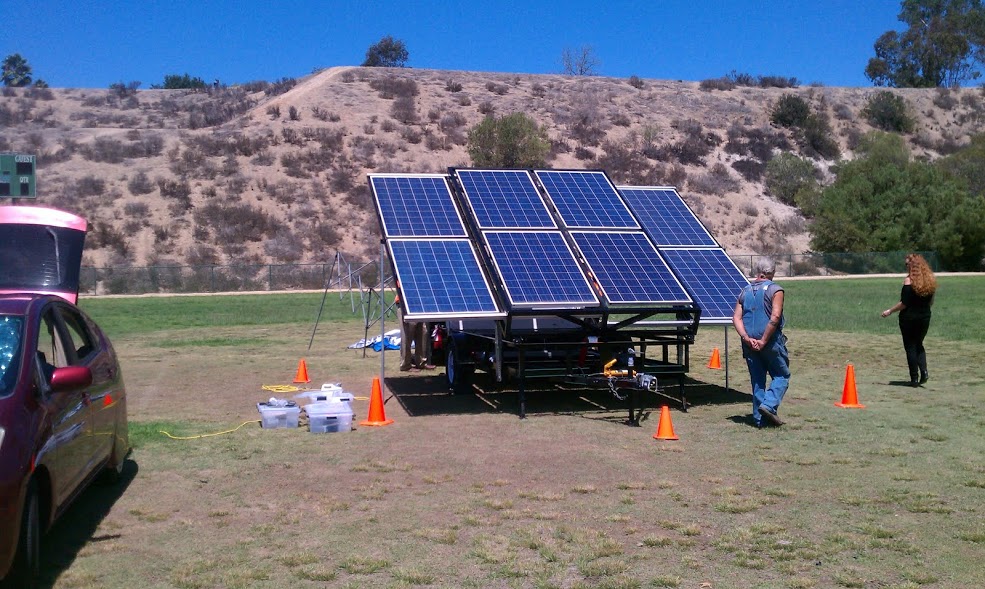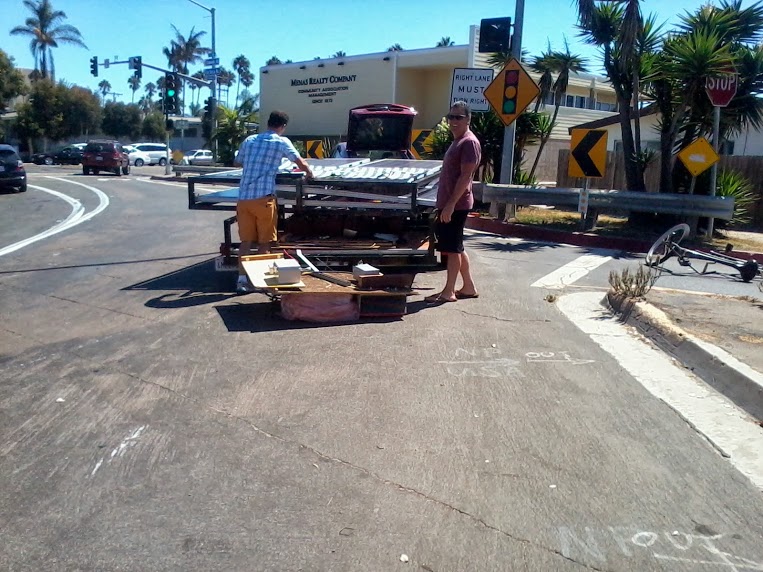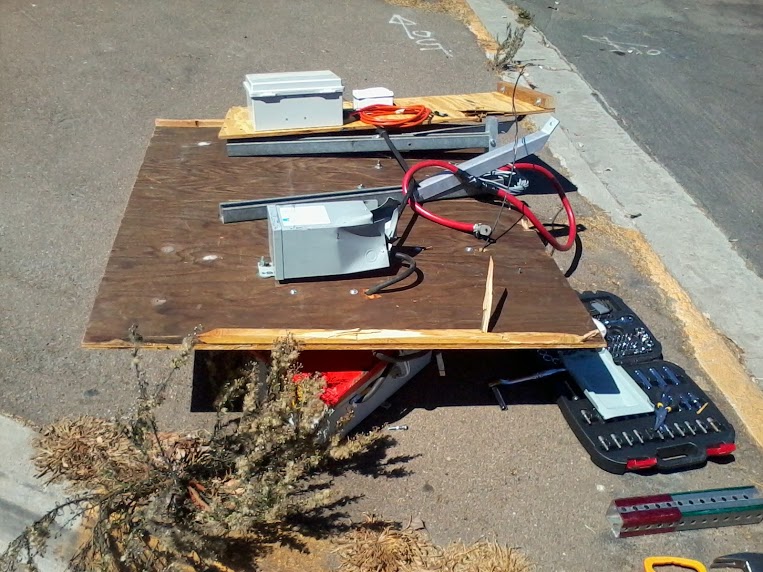Road-tested and Reliable

At SMA, we’re accustomed to hearing remarkable stories about the application of our inverters and the challenges they meet and exceed. The following story caused a ripple of appreciation even amongst our hard-to-impress Service Line, who has heard just about every story there is.
Inverter derby
The setting: La Jolla Boulevard, mid-day, downtown Pacific Beach. A Prius, pulling a flatbed trailer designed with a fully-operational solar system referred to as the Energy Ecosystem, is traversing the busy roadway. In a perfect storm of unfinished city repairs and illegally parked vehicles, the trailer catches a parked car and the cage housing a Sunny Island and Sunny Boy inverter is knocked off the back. The inverters are dislodged from the cage and dragged nearly 50 feet.
A testament to SMA’s durability and resilience – the Sunny Island, although suffering a nasty case of road rash, remained in full working order. The Energy Ecosystem, with the original Sunny Island 4548, was completed in August of 2013 and remains in use today.
Disaster sparks inspiration
San Diego, along with other portions of the Southwest corridor, saw the single greatest power failure in California history just three years ago, with over 1.4 million people in San Diego without power for almost 12 hours. Charlie Johnson, Founder and CEO of Wipomo, was one of those residents affected by “The Great Blackout” in 2011, costing homeowners and residents more than $12 million in spoiled perishable foods alone.
A longtime advocate of renewable energy, Johnson saw potential for a comprehensive energy solution in a concept first developed by a group of undergraduates from University of California, San Diego. Working with electrical engineer Roger Davenport, Johnson augmented the original concept to include an electric vehicle that can add power to a micro-grid, creating yet another energy source for extended blackouts and emergency response— the first Energy Ecosystem, was created.
The design
The Energy Ecosystem is designed around a Sunny Island 4548 battery inverter and a Sunny Boy 2500U PV inverter. The modified flatbed, designed by The Engineers for Sustainable World and referred to as the “solar slider,” houses eight PhonoSolar modules which feed the Sunny Boy. Its 240V output is transformed to 120V by an autoformer. A Toyota Prius, modified with Wipomo’s 10 kWh plug-in hybrid upgrade and two 500 watt power inverters and exports energy into the Sunny Island, pulls the entire trailer.
The decision to use SMA inverters was based on durability and the Sunny Island’s flexible design. “We used SMA products to accomplish this because of the Sunny Island’s versatility – it accepts solar photovoltaic, battery and auxiliary inputs,” said Johnson.
The future
 Wipomo is in discussion with various entities to support emergency remote dispatch and communications equipment. Charlie sees a wide range of possible future uses including disaster management and public services such as electronics and tool charging, EV rescue, UV water purification and water pumping.
Wipomo is in discussion with various entities to support emergency remote dispatch and communications equipment. Charlie sees a wide range of possible future uses including disaster management and public services such as electronics and tool charging, EV rescue, UV water purification and water pumping.
“The great blackout inspired me to seek a solution to the problem of blackouts, with versatility for short term and long term power outages, manual or automatic emergency power switching, with battery backup or without, and enhanced by electric vehicle power export.”
Mission accomplished.






Just more examples of what that awesome yellow inverter can do. I love that thing!